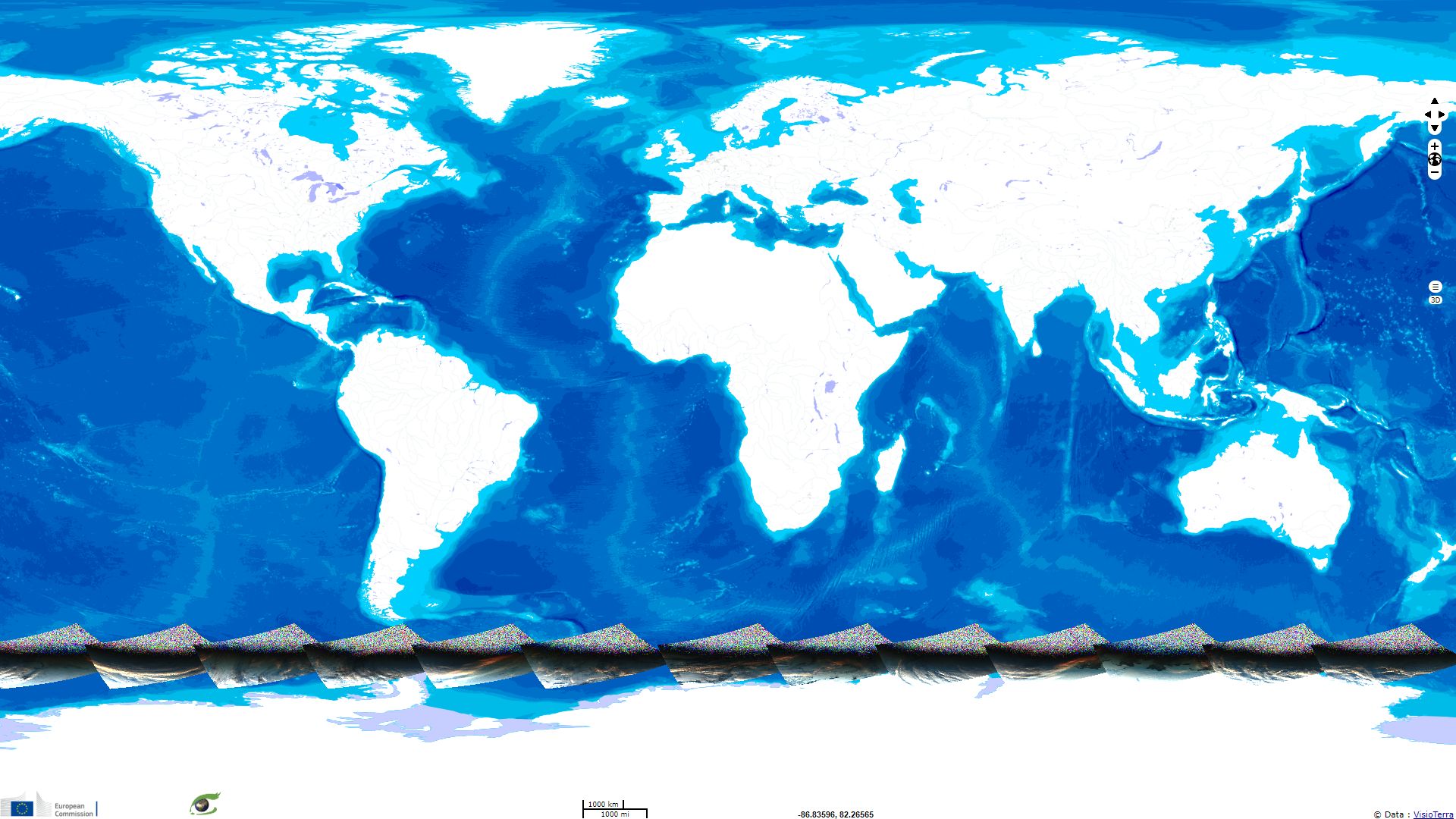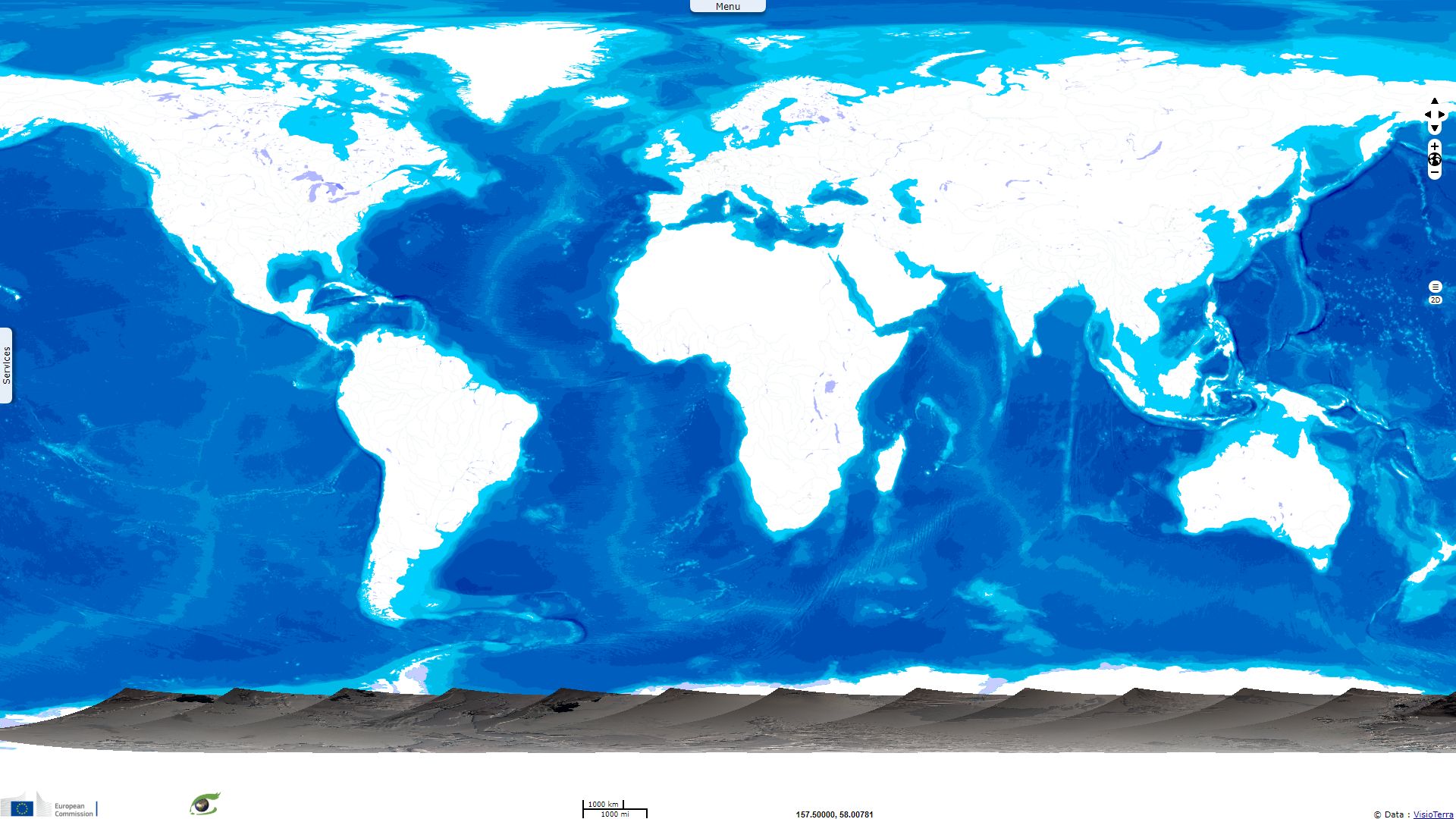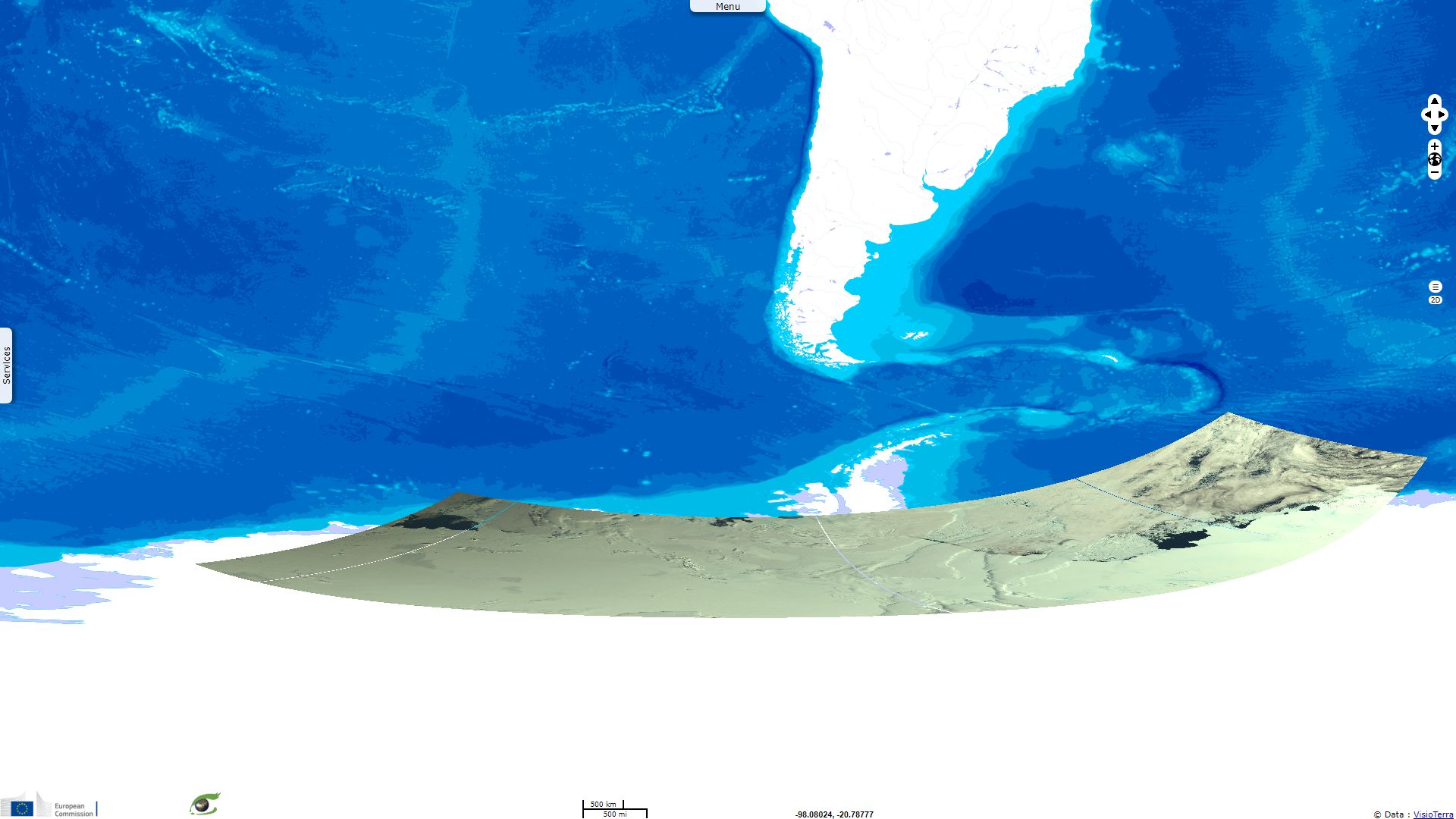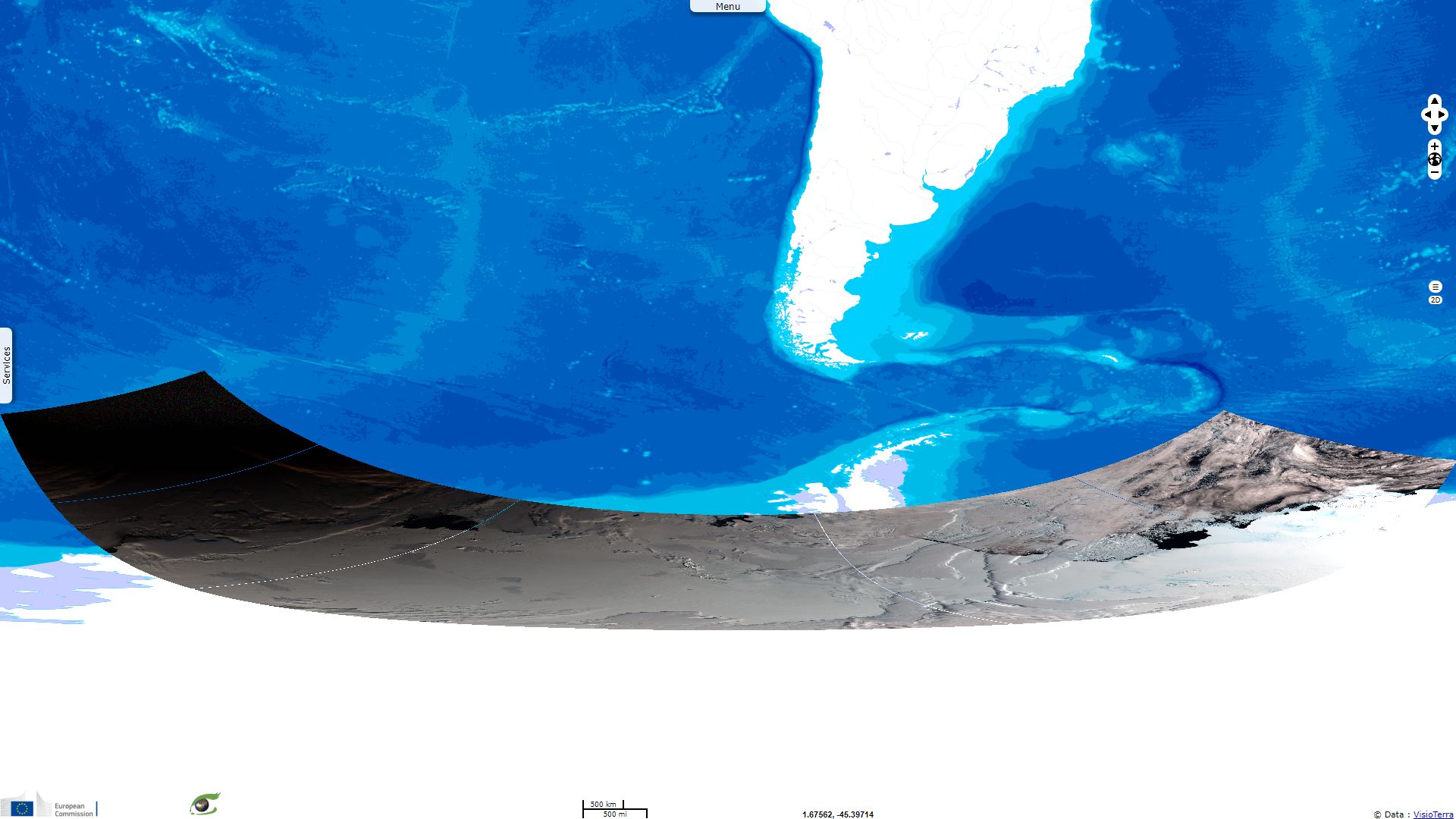Summer solstice in Antarctica
Sentinel-3 SLSTR RBT acquired on 21 December 2017 from 00:47:26 to 00:59:26 UTC
Sentinel-3 SLSTR RBT acquired on 21 December 2017 from 02:28:25 to 02:40:25 UTC
...
Sentinel-3 OLCI FR acquired on 21 December 2017 from 09:12:22 to 09:21:22 UTC
Sentinel-3 SLSTR RBT acquired on 21 December 2017 from 22:40:16 to 22:52:16 UTC
Sentinel-3 SLSTR RBT acquired on 21 December 2017 from 02:28:25 to 02:40:25 UTC
...
Sentinel-3 OLCI FR acquired on 21 December 2017 from 09:12:22 to 09:21:22 UTC
Sentinel-3 SLSTR RBT acquired on 21 December 2017 from 22:40:16 to 22:52:16 UTC
Keyword(s): Polar, cryosphere, solstice, night, day, orbit, Antarctica
These images have been highly stretched to reinforce the contrast between the lightly illuminated areas and those that receive only very little indirect light.
One can sea orange hues in the twilight zone, north of the polar circle. This is caused by altitude clouds, high enough to be illuminated by the highly angled light of the sun. According to Alexandre Moatti, "the atmosphere layer traversed by the Sun is nearly 10 to 15 times higher when the Sun is on the horizon compared to its zenith position, the diffusion of the shortest wavelengths (purple and blue) dissipates them almost entirely giving the red and orange colour of the sky in the direction of the Sun at sunset."
Beyond the terminator the signal becomes noisy in the optical channels. These areas still experience midnight twilights or white nights during which the sun is at its twilight position at midnight, the full darkness of the night never arrives that day but it doesn't remain in the daylight for 24 hours either.




Left: June equinox sunset seen from the International Space Station - Source: NASA
Right - Daily periods of twilight and the difference between sunrise/sunset and dawn/dusk seen from a pole - Source: TW Carlson.
The rendering uses less contrast in order to ensure continuity between images and avoid excessive saturation. It shows a transition between its darker corner in the north-east and its brighter in the south-west.

Relationship between Earth's axial tilt (ε) to the tropical and polar circles - Source: cmglee on Wikipedia.

From May 20 to July 22, there is official midnight sun in Tromsø (69° north). That means the entire solar disk is above the horizon 24 hours a day, and there is 0 hours of darkness during the day. On the Svalbard archipelago farther north (78° north), it lasts from 20 April to 22 August - Source: Tobias Schreuder.
These areas experience midnight sun several months each year, up to six months for the south pole itself. Among this series of images, several show land located on Greenwich meridian. Of those four, acquired between 00:53 and 05:56 UTC (thus local time), all were still illuminated by daylight.
Going further east, the next series was acquired in the early morning local time. As a result, the sun is closer to zenith and these radiance images are brighter.
Compared to the OLCI swath shown fig.7, the SLSTR swath acquired images over location further south. Since SLSTR acquires both in ascending and descending orbits, its acquisitions reach the terminator.















